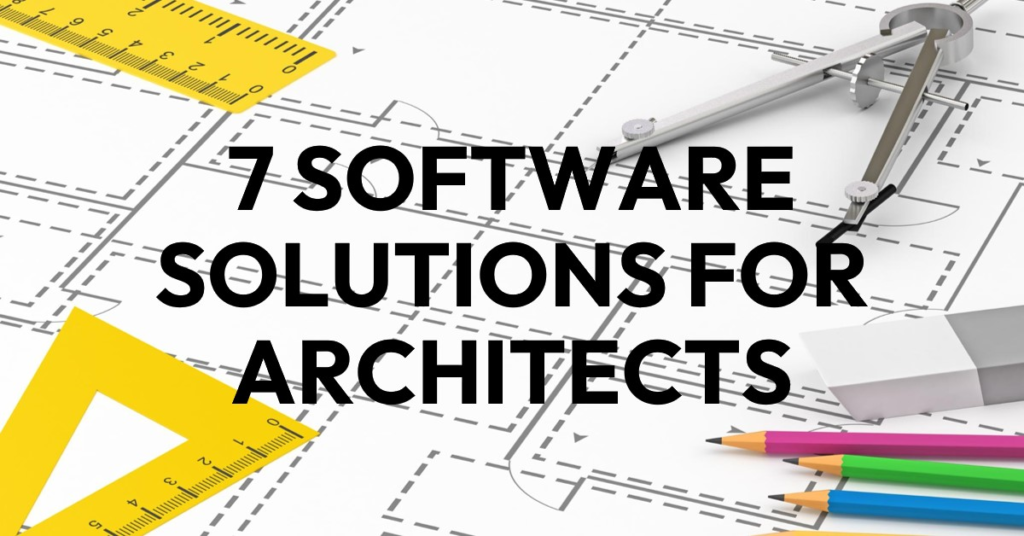
Table of Contents
1. BIM Software: Revolutionizing Design and Collaboration (Software Solution)
Software Solution, Building Information Modeling (BIM) software such as Autodesk Revit, ArchiCAD, and Bentley MicroStation is a game-changer for architects. These tools go beyond traditional CAD software, offering intelligent 3D modeling capabilities that integrate architectural, structural, and MEP systems. With BIM, architects can create accurate virtual representations of buildings, collaborate seamlessly with engineers and contractors, detect clashes early in the design phase, and generate detailed construction documentation—all within a single platform. The collaborative nature of BIM fosters efficient communication among project stakeholders, reduces errors, and accelerates project timelines, making it a must-have for modern architectural practices.
2. Project Management Platforms: Centralizing Tasks and Deadlines
Managing multiple projects, tasks, and deadlines can be overwhelming without robust project management tools. Platforms like Asana, Trello, and Basecamp offer intuitive interfaces for organizing tasks, setting priorities, assigning responsibilities, and tracking progress. Architects can create project timelines, establish milestones, collaborate with team members, and monitor project health in real time. By centralizing project-related communication and documentation, project management platforms enhance team coordination, mitigate risks, and ensure projects stay on schedule, ultimately saving valuable time and resources.
3. CAD Software: Precision Drafting and Detailing
Computer-Aided Design (CAD) software remains indispensable for architects, providing tools for precise drafting, detailing, and visualization of architectural designs. Leading CAD platforms such as AutoCAD, SketchUp Pro, and Rhino offer advanced features like parametric modeling, 3D rendering, and extensive libraries of building components. Architects can create intricate floor plans, elevations, sections, and 3D models with ease, speeding up design iterations and ensuring design accuracy. Seamless integration with BIM workflows further enhances collaboration and data exchange between design disciplines, optimizing overall project efficiency.
4. Rendering and Visualization Tools: Communicating Design Intent Effectively
Compelling visualizations play a crucial role in communicating design intent to clients, stakeholders, and project teams. Rendering software like Lumion, V-Ray, and Enscape enables architects to create photorealistic renders, immersive animations, and virtual reality experiences that bring designs to life. By visualizing materials, lighting scenarios, and spatial configurations in realistic environments, architects can gain valuable feedback early in the design process, make informed design decisions, and accelerate client approvals, avoiding time-consuming revisions and misunderstandings.
5. Collaboration Platforms: Facilitating Seamless Communication
Effective collaboration is the cornerstone of successful architectural projects, and collaboration platforms like Microsoft Teams, Slack, and Google Workspace facilitate seamless communication and information sharing among team members. These platforms offer features such as instant messaging, file sharing, video conferencing, and project-specific channels, creating a centralized hub for project discussions and updates. Architects can collaborate in real time, exchange feedback, resolve issues promptly, and maintain project momentum, ensuring tasks progress smoothly and deadlines are met without delays.
6. Energy Analysis and Simulation Tools: Optimizing Building Performance
Incorporating sustainable design principles and optimizing building performance require advanced energy analysis and simulation tools. Software solutions like Autodesk Insight, IES VE, and DesignBuilder enable architects to conduct energy simulations, daylight analysis, and thermal performance assessments for buildings. By analyzing factors such as energy usage, solar heat gain, and daylighting levels, architects can optimize building designs for energy efficiency, sustainability certifications, and occupant comfort. These tools facilitate data-driven design decisions, reduce the need for costly design changes later in the project, and contribute to time and resource savings over the project lifecycle.
7. Virtual Reality (VR) and Augmented Reality (AR) Applications: Immersive Design Reviews
Immersive technologies such as virtual reality (VR) and augmented reality (AR) are revolutionizing how architects visualize and review designs. VR applications like VR Sketch, IrisVR, and Unity Reflect allow architects to experience their designs in immersive 3D environments, facilitating design reviews, client presentations, and stakeholder consultations with unprecedented realism. AR apps like Morpholio AR and SketchAR enable architects to overlay digital models onto physical spaces, enhancing on-site coordination, visualization of design intent, and client engagement. By leveraging VR and AR, architects can identify design issues early, iterate designs more effectively, and ensure alignment with client expectations, saving time and reducing costly design revisions.
8. Automated Documentation Software: Streamlining Reporting and Documentation
Generating accurate construction documents, reports, and drawings is a time-consuming yet crucial aspect of architectural practice. Automated documentation software such as Bluebeam Revu, Autodesk AutoCAD LT, and Revizto streamlines document creation, revision tracking, and drawing management processes. Architects can create standardized templates, automate annotations and markups, and collaborate on documents in real time, reducing manual errors and streamlining approval workflows. Automated documentation tools save time, improve document accuracy, and ensure compliance with industry standards and regulatory requirements.
9. Cloud-Based Collaboration and Storage Platforms: Secure Data Access Anywhere
Cloud-based collaboration and storage platforms like Dropbox, Box, and Autodesk’s BIM 360 provide architects with secure, centralized repositories for storing, accessing, and sharing project files and data. Architects can collaborate seamlessly with remote teams, share large design files, and access project data from anywhere, using any device with internet connectivity. Cloud-based platforms offer version control, data encryption, and permissions management features, ensuring data security, integrity, and accessibility throughout the project lifecycle. By leveraging cloud-based solutions, architects can avoid data loss, improve collaboration efficiency, and maintain project continuity across distributed teams and locations.
10. Building Performance Monitoring and IoT Integration: Enhancing Operational Efficiency


Post-construction, architects can leverage building performance monitoring software and Internet of Things (IoT) integration platforms to monitor building systems, analyze performance data, and optimize operational efficiency. Solutions like BuildingIQ, Honeywell Forge, and Siemens Navigator provide real-time insights into energy usage, HVAC performance, indoor air quality, and occupant comfort metrics. Architects can identify optimization opportunities, implement predictive maintenance strategies, and fine-tune building systems remotely, ensuring buildings operate efficiently and sustainably over time. Integrating IoT sensors and smart building technologies during the design phase facilitates data-driven design decisions, reduces operational inefficiencies, and enhances overall building performance, ultimately saving time and resources in facility management and operations.
In conclusion, embracing these ten software solutions empowers architects to streamline workflows, enhance collaboration, optimize design performance, and deliver projects efficiently within timelines and budgets. By leveraging technology to automate routine tasks, visualize designs effectively, and leverage data-driven insights, architects can focus on creative innovation, client satisfaction, and project success, ultimately avoiding the pitfalls of time loss and inefficiency in architectural practice.


